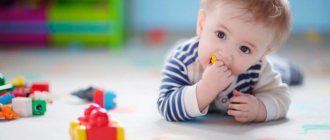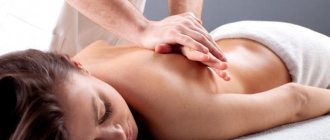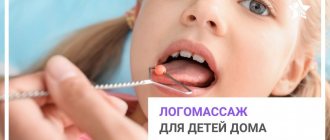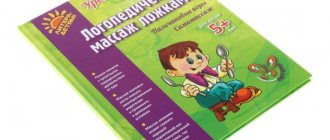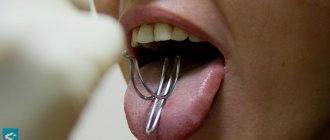December 3, 2016 Speech development defects in children (dysarthria) usually have complex causes. This may be disturbances in the speech centers of the brain, problems with the transmission of nerve impulses, or insufficient mobility of the speech organs. The main method that helps children begin to speak normally is speech therapy massage for dysarthria. It can be compared to training in the gym, because the speech organs - and, above all, the tongue - are controlled by the work of the muscles. With the help of the procedure and regular exercises, you can quickly achieve good pronunciation of all sounds, including the most complex ones.
Correction of dysarthria with massage in children
Speech therapy massage for various forms of dysarthria involves mechanical effects on various parts of the face and on the tongue. As a result, pathological symptoms in the peripheral part of the speech apparatus are eliminated, and muscle tone changes.
As a result, in the child, the strength of muscle spasms and their number decreases, and muscle tone normalizes with dysarthria (articulatory and facial muscles). The mobility of the speech organs is restored, blood flow in the soft tissues of the face and brain improves.
These factors help improve the quality of speech: it becomes smooth, expressive, and understandable to others. The baby begins to behave calmer and sleeps better.
Speech therapy massage is prescribed only by a speech therapist after a detailed examination. The specialist assesses the degree of the violation and, depending on this, selects an individual correction scheme.
Contraindications
Speech therapy massage for children with dysarthria cannot be performed when the child has:
- rash, swelling of various types on the skin;
- exacerbation of herpes infection;
- colds, viral diseases;
- inflammatory processes of the oral cavity and lips - stomatitis, gingivitis, caries, fungal infection;
- inflammatory processes of nearby organs - conjunctivitis, rhinitis, lymphadenitis, furunculosis;
- cuts, abrasions, hematomas;
- severe chronic diseases - oncological, cardiovascular, hematological, neurological, psychiatric.
Face massage
The correct sequence for a relaxing massage is as follows: first, apply to the face and lips, then to the tongue.
Facial massage for dysarthria involves rubbing, kneading, and stroking. Before the procedure, remove jewelry and keep your nails short. The first sessions are short, the duration gradually increases.
The classic version begins with kneading movements in the forehead area. The movements are smooth, from the central part towards the temples. Then stroking from the eyebrows to the hairline with the pads of all fingers.
You cannot press hard on the eyelids: all movements should be light, stroking. The direction is circular, clockwise.
In the cheek area, it is necessary to relax the muscles by stretching them from the mouth towards the temples, and from the cheekbones - downwards, towards the chin. After this, we move to the nose, smoothly rubbing the wings up and down, stroking the nasolabial fold in the direction from the nose to the corners of the lips.
Articulatory lip massage for dysarthria involves kneading with vibration movements, then rubbing from the middle of the lips to the corners. Then they rub the chin and stroke the ears.
When a child has facial asymmetry, different muscle tone on the left and right, pay more attention to the affected side to achieve normalization of muscle tone in dysarthria.
Signs of erased dysarthria
Typically, dysarthric children are characterized by clumsiness, impaired coordinated movements, and underdevelopment of finger motor skills. They have difficulty mastering the skills of buttoning and lacing, do not know how to hold scissors, and do not like to draw and sculpt. But in my practice over the past two years, I have observed many children aged 5-7 years with good coordination and developed fine motor skills; they love to draw, paint, sculpt, hold a pencil well, and successfully handle shading. Signs of the disease are visible only on the face, and not in everyone. One of the noticeable signs of erased dysarthria: a static, sedentary face, tense lips or, conversely, saggy lips and cheeks, the mouth does not close.
Of particular interest in the erased form of dysarthria is the language. In most cases, the tongue is thick and massive; when stretched, the back of the tongue tenses and gathers into a lump. Due to this, the child has difficulty pronouncing many sounds. When pronouncing hard sounds, soft sounds are heard, since the back of the tongue automatically rises to the sky, as a result, instead of [p] we hear [p'], instead of [b] - [b'], instead of [s] - [s'], instead of [ z] – [z'], etc. The tense back of the tongue closes the hole for the free passage of the air stream, so whistling and hissing sounds have the sound [ts]. When repeating syllables and words, many sounds acquire overtones [l']. For example, tya-tya-tya sounds like aphids-aphids. The tip of the tongue with erased dysarthria is usually not pronounced, that is, it is impossible to determine where the tip is. Often, due to pareticity of the tongue muscles, the child cannot lift it up, lick the upper lip, or reach the upper teeth with the tip. In this regard, the baby does not have hissing sounds and [r].
Many children experience deviation
- deviation of the tongue towards the paralyzed muscle. When you ask a child to pull out his tongue and hold it on his lower lip for a count of five, the tongue shakes, trembles and tries to move to the side. This is a clear sign of dysarthria. Due to hyperkinesis, the pronunciation of a group of whistling, hissing and sonorant sounds is impaired, and prosody also suffers. Speech is inexpressive, slurred, inarticulate, monotonous, often quiet, with a slight crackle in sound, nothing can be understood. They say about such children: “he has porridge in his mouth.”
A distinctive feature of dysarthrics is their unstable psyche. Such children often rush from one extreme to another. Either they are overly touchy, vulnerable, whiny, they react painfully to every little thing, then they become aggressive, rude, refuse to engage, talk, and even throw themselves at others with their fists. Dysarthric children have very low motivation and motivation to learn.
Speech therapy tongue massage
The tongue is the main organ of speech. Therefore, speech therapy massage of the tongue for dysarthria is a necessary element of treatment. Helps fight weakness, limited muscle mobility, paresis and paralysis. Specialists use several techniques in their work. Let's take a closer look at them.
Massage with a toothbrush
A toothbrush, due to its bristles, perfectly warms up the tongue. It can be used both in classes with a speech therapist and for independent speech therapy massage at home. The approximate steps are as follows:
- Place a paper napkin or handkerchief under your tongue to prevent saliva from running off and irritating your skin. When the napkin gets wet, you need to change it;
- the child should relax his tongue as much as he can;
- first perform circular kneading movements along the back of the tongue, the pressure should not be strong;
- stroking over the entire area of the tongue, intermittent movements, as when brushing teeth;
- the baby tenses his tongue, lifting it upward, you massage the lower part of the tongue and the pit under it.
When massaging, be careful not to trigger a gag reflex in the child.
Tongue massage with fingers
Finger speech therapy massage of the tongue for dysarthria allows you to work all muscle groups, including deep ones. Sessions help relieve hypertonicity of facial and articulatory muscles. To carry out the procedure, you need a clean handkerchief, fabric napkins, and special finger pads.
The stages are:
- Relaxation of the tongue muscles;
- Grab your tongue with two fingers, twist it clockwise and counterclockwise, tap on the back;
- Move towards yourself, while grabbing the tip with three fingers: one from above, two from below;
- Now let's deal with the middle part of the tongue. Also grab your tongue and pull it towards you, holding this position for a couple of seconds;
- Grab your tongue and pull it towards you a little. In this position, use the fingers of your other hand to make squeezing movements over the entire surface of the tongue. They squeezed - they let go, they squeezed - they let go;
- Turns around an axis, while the tongue needs to be placed on one edge, hold it for a couple of seconds, then on the other edge;
- It is also necessary to work with the lips - their role in articulation is significant. Tap them with your fingertips, stretch them up and down, and roll them into a tube.
Speech therapy massage for various forms of dysarthria should be performed once or twice a day, for 15 minutes, for a couple of weeks. The speech therapist will tell you the exact duration and quantity: it all depends on the diagnosis and the degree of impairment. Also consider age: small children cannot sit for long, so choose a few exercises one day and do only them. And the next day, do others.
Probe massage
One of the modern correction methods is probe massage for dysarthria. This is one of the new treatment methods that is gradually gaining popularity. It is carried out using special probes developed by E. V. Novikova, Doctor of Pedagogical Sciences.
The standard set consists of 9 tools, each of which is designed for specific purposes. For example, sleds, shaped like sled runners with rounded ends, are designed to stimulate muscles. The “hatchet” in the form of two flattened loops can be used with both increased (light pressure) and decreased tone (strong pressure) of the muscles.
There are variations by other authors, for example, probes with a su-jok effect for additional stimulation of nerve endings and muscles.
After the sessions, children’s speech breathing normalizes, their voice becomes expressive and strong, defects in sound pronunciation are eliminated, and the condition of the central nervous system improves.
Articulatory massage with probes for dysarthria should not be performed on children under six months; at this age there is no such need.
The sequence of a relaxing massage is determined by a speech therapist/speech pathologist, based on the specific situation, the severity of the disease and the age of the patient. The standard tactics are as follows:
- The tool in the form of a small ball needs to be moved over the entire surface of the tongue;
- Piercing the tongue with a pitchfork-shaped probe. Muscle contraction occurs. Then the doctor makes oscillatory and rotational movements with the instrument at various points for five seconds;
- Using a figure eight, press on the organ at several points;
- “Sleds” come in three sizes. They also make pressing movements;
- "Hatchets" are used to slide with little pressure;
- Use a “crosspiece” or “pusher” to press on the tongue, and then remove the probe. The muscles of the tongue contract.
Probe massage for dysarthria is carried out for a long time: usually in courses of 2–3 weeks. Each movement must be repeated 20–30 times. A repeat course is indicated after a month and a half.
What to do if a child is diagnosed with dysarthria: advice from a speech therapist
Some parents are faced with the fact that their child - natural or adopted - has speech problems and, hearing the word “dysarthria”, feel confused. What is dysarthria, why does it occur and how to correct it, says Resource specialist, speech therapist of the highest category, member of the Russian Dyslexia Association Galina Orlova.
− Dysarthria is a disorder of the pronunciation side of speech, which is associated with damage to the central part of the speech motor analyzer and a violation of the innervation of the muscles of the articulatory apparatus. Simply put, the child cannot fully perform the movements necessary for speech. Sound pronunciation suffers from this, explains Galina. - In milder cases, this is a distortion of certain sounds. In severe cases of the diagnosis, omissions and replacement of sounds may be noticed. The pace and expressiveness of speech are impaired.
Dysarthria can also be characterized by the presence of paralysis and paresis of the organs of articulation. In this case, incomprehensible speech is a consequence of the diagnosis, up to the absence of speech due to complete paralysis of the speech motor muscles - anarthria.
The causes of dysarthria can be different - deviations from the norm during intrauterine development due to toxicosis, hypertension, nephropathy in the mother, infectious diseases suffered by a woman during pregnancy, as well as asphyxia of newborns, rapid or prolonged labor, mechanical obstetrics, a long anhydrous period in childbirth
From the very first days of life, such children are observed by a neurologist. They are often prescribed medication, massage and other rehabilitation procedures.
− How to recognize dysarthria?
− An attentive parent may suspect it by the child’s unusual facial expressions, profuse salivation, the shape and position of the tongue, the ability to fix an articulatory position, and sound pronunciation.
− When should you start working with dysarthrics?
− It is advisable to begin speech therapy work with any speech disorder in early preschool age. The earlier the disease is diagnosed, treatment and corrective classes are started, the greater the chances of success.
− What should parents do if their child is diagnosed with dysarthria?
— The first step, of course, is an examination by a neurologist. There are no special medications to combat dysarthria. The doctor only corrects some neurological symptoms with the help of medications. It is also important to consult a speech therapist who knows the technique of speech therapy massage, who, after a full examination, will give a conclusion and recommendations.
In addition, experts advise developing fine motor skills. You can assemble puzzles and Lego sets, sculpt from plasticine - there are many games that develop little fingers. You can use non-traditional methods of influence, such as su-jok therapy. The simplest method of su-jok therapy is training with special massage balls.
Logorhythmics classes are recommended for children two to three years old, for example, according to Zheleznova’s method. To correct dysarthria in children five years old, a speech pathologist is involved in the classes.
− What is the focus of the speech therapist’s work in the classroom?
— The specialist is engaged in the development of the prosodic side of speech - rhythm, strength, timbre, melody, tempo, logical stress, diction, as well as articulation and sound pronunciation, auditory attention, phonemic hearing, correction of speech breathing. The speech therapist will also pay attention to the normalization of muscle tone in the articulatory muscles and the development of voluntary facial movements.
If you do not have the opportunity to visit a speech therapist, then you can work with your child at home on your own, having previously completed a course with a specialist.
I will give examples of some elements of speech therapy massage and self-massage: take turns puffing out our cheeks, retracting our cheeks; close and open your mouth, click your teeth; suck on a small piece of sugar or candy; imitate the resorption of a lollipop; lick your lips; We hold a piece of bandage or gauze with our teeth for a long time; the adult’s task is to try to carefully remove the fabric.
It is also important to perform a complex of articulatory gymnastics - these are the “Proboscis” exercises (pull your lips forward, teeth and lips are closed, hold for five seconds), “Fence” (lips in a smile are tense with the mouth slightly open, teeth are clenched, the lower jaw is in a calm state, hold for five seconds) and their alternation, “Window” (with each count we open and close our mouth), “Spatula” (when smiling with an open mouth on a relaxed lower lip, place the tongue flat, hold for five seconds), “Needle” (smile with an open with our mouth, we put our tongue forward, trying not to bend it upward), “Needle shovel” (alternating exercises), “Clock” (we smile with our mouth open, stick out our tongue and make movements to the right and left, while touching the corners of our mouth with our tongue), “ “Swing” (smile with an open mouth, the tip of the tongue resting either on the upper or lower teeth), “Horse” (we click the tip of the tongue, imitating the clatter of hooves).
Over the years of work, I have often met children diagnosed with dysarthria of varying severity. This type of speech disorder has become a global problem in recent years, so it is extremely important to identify disorders in time and consult a specialist. But parents should know that correctional work with dysarthric children should not be limited to classes with a speech therapist. For the best results, this work should be continued at home, on a walk and in any joint activities.
Press service of the Department of Labor and Social Protection of the Population of Moscow
Is it possible to perform massage at home?
Experts recommend performing speech therapy massage at home. Firstly, this is a guarantee of continuity of treatment, which affects the effectiveness of correction. Secondly, children, especially small ones, are more relaxed in normal circumstances, but with a stranger it can be impossible to even force their mouth to open. Thirdly, at home you can perform a massage at any time: you don’t need to adjust to your schedule or change your routine, which is a stress factor in itself.
Massage your face with your fingers. You can use teaspoons. Instead of probes, when massaging your tongue, you can also use improvised means: spoons or the same toothbrushes. Kneading with your fingers will also help.
It is necessary that you know how to do a relaxing massage for dysarthria. It is important to do all the movements correctly, to know where to press harder and where it is better to use light touches. You can learn through courses. A speech therapist can also show you the basics. If you combine the procedures with a regular massage, the effect will be many times higher. Just keep in mind that it can be relaxing or tonic.
Incorrect technique can cause deterioration: other types of speech disorders may appear, in addition to dysarthria.
Important rules of logomassage
Articulation massage for dysarthria is undoubtedly an effective method of correction. To benefit and avoid complications, the following conditions must be met:
- All stages of treatment are controlled by a speech therapist: drug treatment, physiotherapy, massage. Therefore, choosing a specialist is one of the fundamental moments in therapy;
- In addition to professional qualities, it is important to establish emotional contact between the speech therapist and the child. This means that a specialist must be able to find a common language with children of different ages. If the child behaves awkwardly and starts throwing tantrums during sessions, there will be no benefit from such procedures, no matter what credentials the speech therapist has;
- The room in which a relaxing massage for dysarthria is performed should be comfortable. It is necessary to ventilate it, remove distracting objects;
- It is better to do the procedures while lying down. But if the child is so uncomfortable, he can sit down;
- The child should be in a good mood, well-fed and happy. Treatment cannot be carried out when he is tired, emotionally overworked or sick. During the massage he should not experience discomfort or pain;
- Your mood is also important. If you are excited and nervous, the baby will feel it and will also begin to worry;
- If you use a spoon or brush, purchase them specifically for massage;
- The sooner you start therapy, the faster you will get results. Therefore, pay attention to the child’s speech, especially if he is at risk: your pregnancy and childbirth were difficult, you were sick during pregnancy, the child had a traumatic brain injury, he was seriously ill for a long time, you have close relatives with speech problems. disorders. The first “bells” are limited mobility of the lips, palate, tongue, difficulties with sucking and swallowing food. Nasal and slurred speech when the child begins to talk. If you notice these symptoms, consult your doctor;
- The procedures will be effective only with an integrated approach. This means that at the same time lessons are held with a speech therapist on sound production, breathing exercises, and the development of fine motor skills.
Be patient. Lead a normal life: let your baby feel that he is no different from the rest, that he is also loved and appreciated. This is an important point that will undoubtedly help him cope with his problems.
Who treats dysarthria
To correct the situation, you need to contact two specialists - a neurologist and a speech pathologist. An accurate assessment of the condition can only be determined after a thorough examination and history taking.
Corrective measures are also carried out in two directions - neurological and speech therapy. An integrated approach includes methods such as:
- Drug therapy.
- Physiotherapy.
- Physiotherapy.
- Speech therapy classes.


